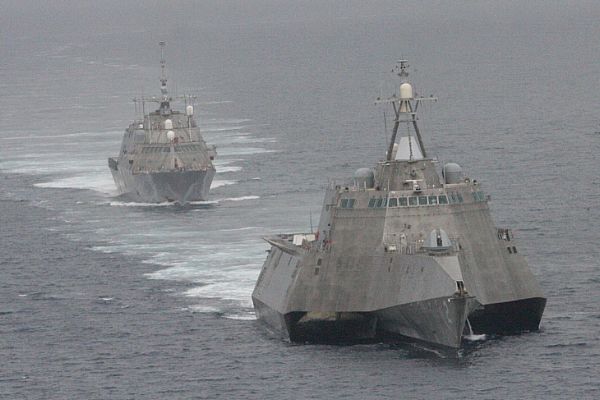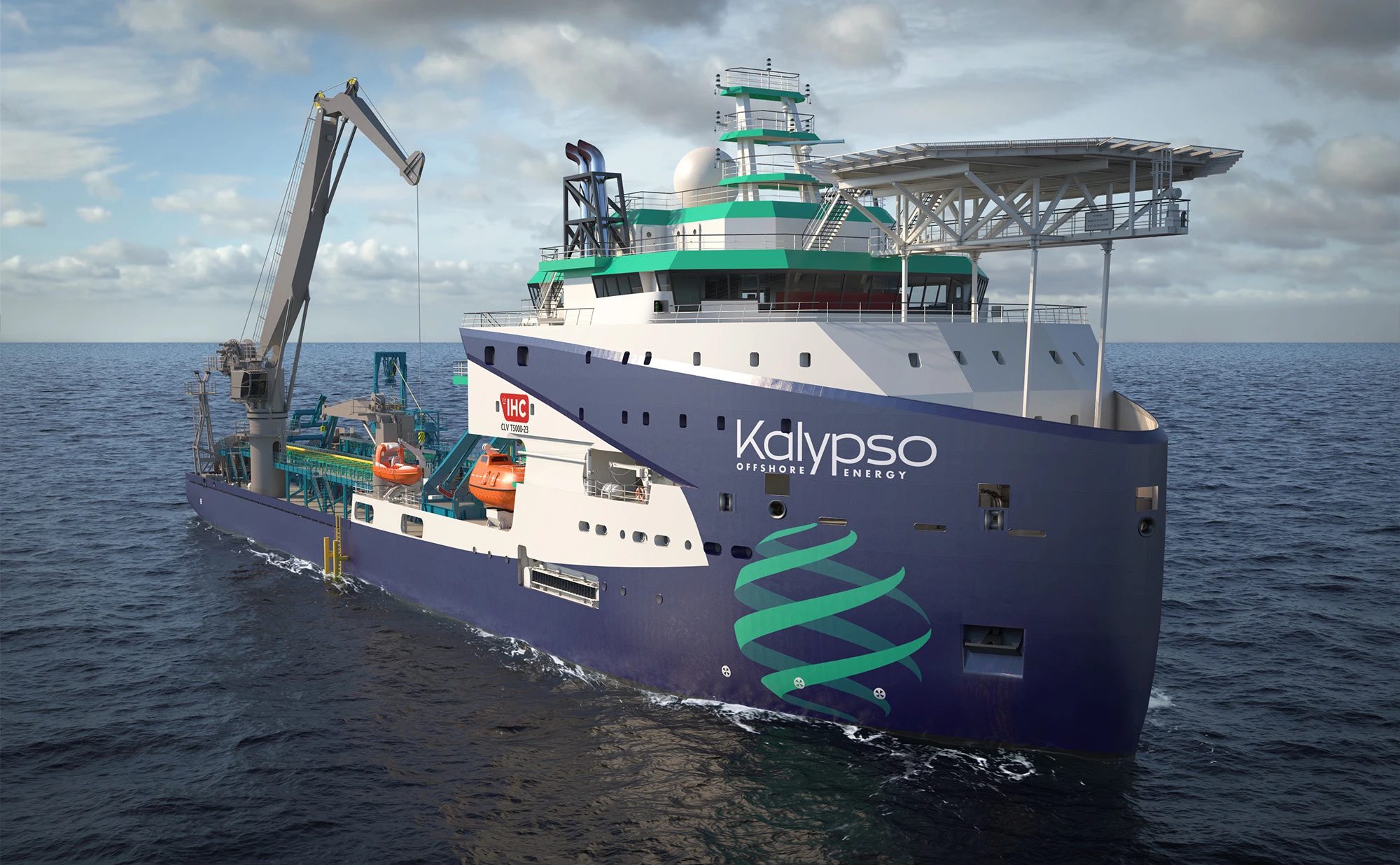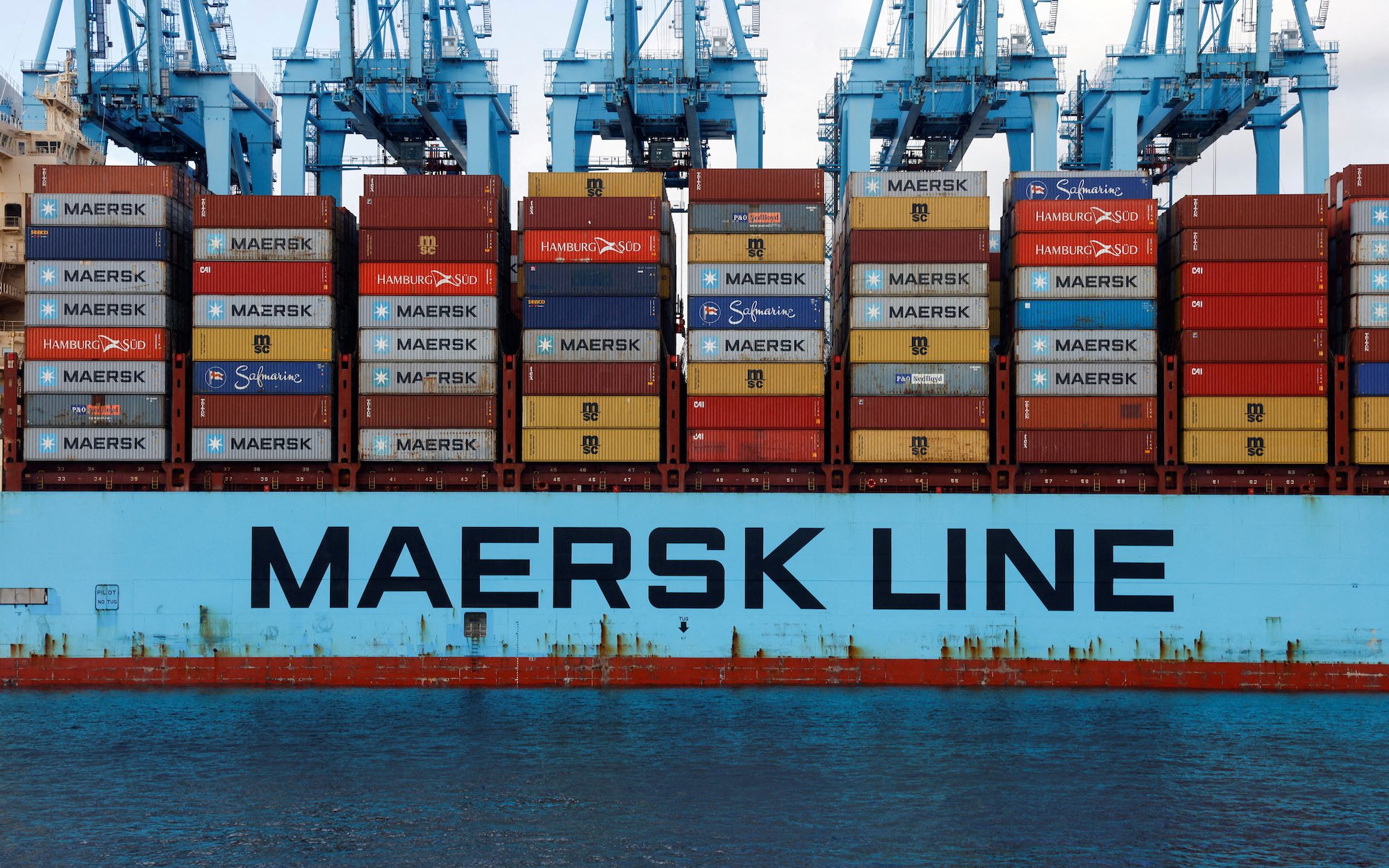The first of class littoral combat ships USS Freedom (LCS 1), rear, and USS Independence (LCS 2) maneuver together during an exercise off the coast of Southern California in 2012. Photo: U.S. Navy
(Bloomberg) — Congress should consider slowing funding for the Navy’s Littoral Combat Ship because the Pentagon is buying vessels faster than it can test their design and performance, according to a Government Accountability Office report.
The Navy hasn’t completed “technical studies that raise fundamental questions about whether the program, as envisioned, will meet the Navy’s needs,” the GAO, Congress’s nonpartisan investigative arm, says in a draft report obtained by Bloomberg News.
The $34 billion LCS program has continued to draw support from the Pentagon and lawmakers despite federal budget cuts and a growing list of questions about its designs, firepower, defenses and survivability.
While construction costs have doubled to $440 million per ship from an original goal of $220 million, a confidential 2012 Navy study found that the ships are too lightly armed, that plans to swap equipment for different missions are impractical, and the decision to build two versions simultaneously complicates logistics and maintenance.
Failure to resolve such issues will result in “ships that are ill-suited to execute” war fighting needs, Rear Admiral Samuel Perez wrote in the March 2012 report.
Still, the Navy will be under contract for at least 24 of the planned 52 ships before it completes tests in 2019 to see whether mission modules designed to reconfigure the vessels quickly for different tasks can meet minimum performance requirements, the GAO report said.
‘Apparent Disconnect’
“The apparent disconnect between the LCS acquisition strategy and the needs of the end user suggests that a pause is needed,” the GAO said. “Congress is in a position to slow funding” for additional purchases — starting with a $2 billion request for four ships in fiscal 2014 — “pending the results of the technical studies that are already underway.”
Congress “should consider restricting future funding” until the Navy completes continuing technical and design studies and determines the extent to which they may result in major redesigns of ships already under contract, the GAO said.
The LCS is to be a small, speedy, adaptable ship for patrolling shallow waters close to shore, for example in the Persian Gulf. It’s designed to use interchangeable modules for various missions, such as clearing mines, hunting submarines or waging surface warfare.
The Navy is buying two versions of the ship. One, with a steel hull, is being made in Marinette, Wisconsin, by a group led by Lockheed Martin Corp. A group led by Austal Ltd. is building an aluminum trimaran in Mobile, Alabama.
Unanswered Questions
“The Navy has a great deal of learning to do about the ships, the integrated capability that they are intended to provide when equipped with mission modules and how the overall LCS concept will be implemented,” the GAO said.
The draft report was delivered this week to Navy officials as four congressional defense committees are considering the Pentagon’s budget request. The Navy has asked for funding to purchase four ships — two of each version — in fiscal 2014, which begins Oct. 1.
The House Armed Services Committee and the House appropriations panel’s defense subcommittee are scheduled to consider the defense bill and the Navy request on June 5.
“We understand what is at stake and will get this right,” Vice Admiral Richard Hunt said in a statement, when asked what the Navy needs to show Congress to keep lawmakers’ support.
Hunt is head of the Navy’s LCS Council, which was set up last year by the chief of naval operations, Admiral Jonathan Greenert, to evaluate all facets of the program and suggest improvements.
‘Great Confidence’
“I have great confidence in the LCS program,” Hunt said. “It provides needed capability now combined with the ability to adapt to changing requirements in the future.”
“The Navy supports the work of GAO to provide information to Congress and conduct oversight of defense programs,” said Lieutenant Junior Grade Caroline Hutcheson, a Navy spokeswoman.
“The Navy continues to use feedback and information gathered from program reviews and fleet operations to identify areas of improvement and act on them,” she said.
Still, some of the tenets underpinning the littoral ship concept “have degraded, remain unproven and continue to evolve,” the GAO said. “Navy expectations of LCS capability have weakened over time.”
Hagel Visit
The first LCS, the USS Freedom, has been deployed to Singapore, where U.S. Defense Secretary Chuck Hagel is scheduled to visit the ship this weekend during a conference.
The eight-month deployment “is a tremendous opportunity to test the ship in a real-world environment and begin integrating this essential ship into our fleet,” Hutcheson said. “The Navy remains committed to the LCS program.”
The House Armed Services panel’s seapower subcommittee approved the funding last week, even as its chairman, Republican Representative Randy Forbes of Virginia, said he was “concerned the procurement of this seaframe has advanced beyond the technology available in the associated mission modules.”
“We need to continue to take a hard look at this program,” Forbes said.
The Senate Armed Services Committee will review the Navy request next month. Arizona Senator John McCain, the ranking Republican on the committee’s seapower panel, has criticized the Littoral Ship.
‘Fix It’
“We need to fix it, or find something else quickly,” McCain said at a May 8 hearing.
The Senate’s defense appropriations panel hasn’t announced a date for consideration of the request.
The GAO draft report doesn’t call for canceling the LCS program and acknowledges that Bethesda, Maryland-based Lockheed and Henderson, Australia-based Austal have made improvements and are producing better ships.
“The deficiencies identified in this report are not criticisms of progress in the sense that things should have gone smoother or faster,” said GAO.
Still, the Navy “continues to buy LCS seaframes and modules even as significant questions remain,” it said. “There are also significant unknowns related to key LCS operations and support concepts and the relative advantages and disadvantages of the two seaframe variants.”
The Navy plans to request funds in fiscal 2015 to buy the last four vessels in the initial batch of 24.
– Tony Capaccio, Copyright 2013 Bloomberg.
Unlock Exclusive Insights Today!
Join the gCaptain Club for curated content, insider opinions, and vibrant community discussions.

 Join The Club
Join The Club













